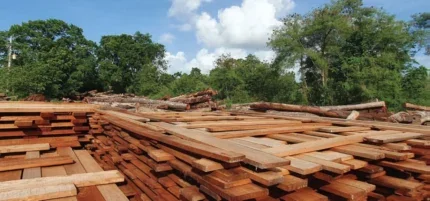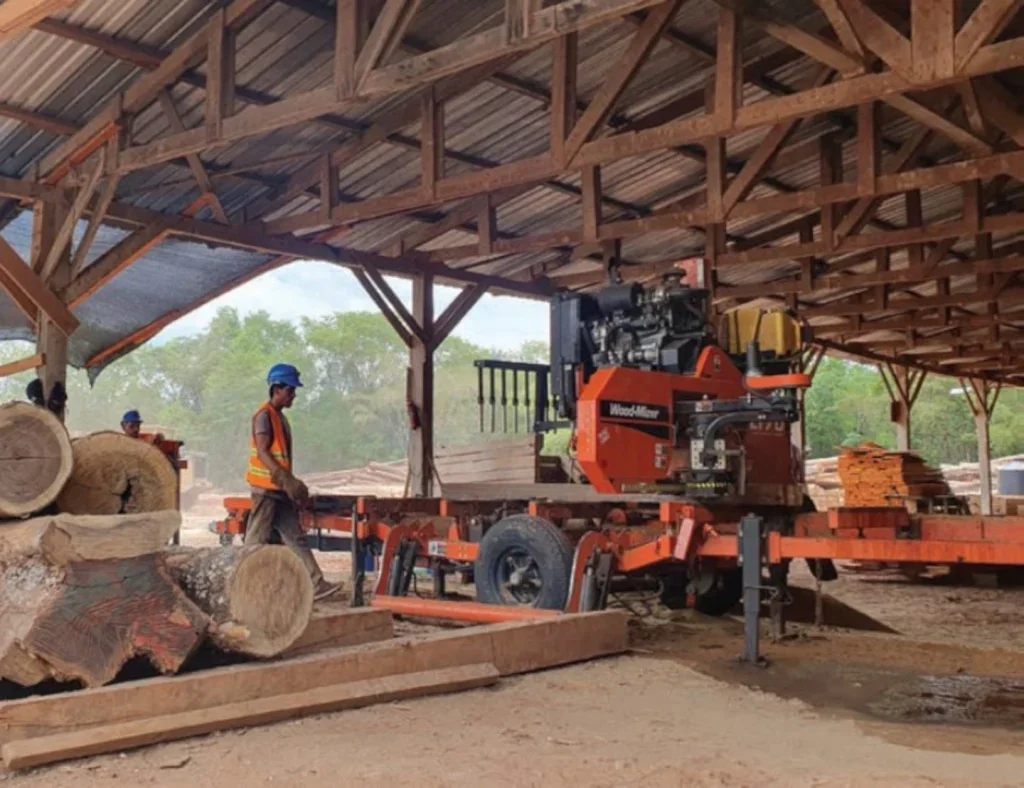
A European trade mission to the Selva Maya forest in central America is aimed at developing business-to-business contacts and timber exports from the region.
The visit is taking place from November 17-24 and is open to timber importers, traders and distributors from across Europe, including the UK. Urban and other local authority procurement personnel, specifiers and endusers are also invited.
The initiative is being organised by not-forprofit sustainable timber and forestry advisers and analysts Probos, in association with the NGO Rainforest Alliance (RA). The latter has been active in the Selva Maya for 30 years, supporting technical capacity building and implementation of sustainable forest management.
Included in the programme are visits to Selva Maya community forest operations in Guatemala and their counterparts in the area of the forest in the Yucatan Peninsula in Mexico. All are FSC-certified or in the process of achieving certification.
Probos said participants will be able to evaluate timber supply and species available from what is the second largest tropical rainforest in the Americas.
“They will meet key actors across the tropical timber value chain, from established enterprises that have been FSC-certified for over 25 years, to emerging suppliers, private sector stakeholders and governmental bodies,” said Probos director and senior adviser Mark van Benthem.
The objective of the mission is to assist these forest operators to break into a wider international market and, for those already exporting, to broaden their overseas customer base for timber, and also non-timber forest products.

The Selva Maya community timber and forestry enterprises primarily trade in mahogany and cedar, but they have access to over 100 lesser-known species. Many of these, say the mission organisers, are commercially viable, can be sourced sustainably and should be brought to market to support industry development. They include chicozapote, tzalam, pucté and manchiche.
“In focusing on production and export of their two principal species there is also a risk of impacting forest composition and additionally mahogany is CITES-listed, so there is more than commercial value in developing these other species,” said Mr van Benthem
Selva Maya forestry operations, said the trip organisers, have so far been unable to adequately exploit such timber variety due to lack of performance and application data, and a lack of online presence on the part of suppliers. This, said Probos, has resulted in limited engagement with industry leaders who hold the key to driving consumption in national, regional and international markets.
The trade mission, in bringing together demand-side companies with the community forest operators, is billed as a step towards helping overcome these obstacles. And possibilities for commercialising these lesser-known timber species will be another focus of the mission programme. The RA also highlights that these timbers are not just available as roundwood, but as lumber and in the form of finished products, including decking and indoor and outdoor furniture.
“The RA has also produced a book on the range of species available,” said Mr van Benthem.
Selva Maya timber producers do export more to the US than Europe.
“For instance, mahogany from the forest is used by Gibson guitars,” said Mr van Benthem. “But the region and opportunities presented by its timber seem not to be so well-known in the European market, although the [France headquartered] home improvement retailer Leroy Merlin has products in pucté and manchiche.”
Generating commercial opportunity for forest and timber operations in the region supports jobs and livelihoods, say the mission organisers, and can also underpin and incentivise adoption of certified sustainable forest management and forest maintenance more widely.
“The region already presents a very good example of the benefits of certified sustainable management,” said Mr van Benthem. “The wider forest is threatened by deforestation. There is pressure from development and conversion to arable and livestock farming and to plantation crops. But in the 500,000ha FSC-certified Mayan Biosphere Reserve area there is less than 0.4% deforestation. The management approach also makes the forest more resilient and less vulnerable. There were serious fires in the wider region last year, but far fewer outbreaks in the certified concessions.”
Community organisations, or ‘ejidos’, of the Yucatan Peninsula, who were given title to their local land in the 1930s, manage the northern edge of the Selva Maya forest for timber and a range of non-timber products. They are described as a critical contributor to the area’s rural economy.
They are governed by regulations on land management and their tradition of sustainable operation, says RA, has helped guard against illegal logging, land conversion, deforestation and forest degradation.
Of the 120 ejidos in the Mexican states of Campeche and Quintana Roo, which include areas of the Selva Maya, 39 report that forestry is their main source of income.
In Guatemala, in the late 1990s 25-year rights to timber and other forest resources were granted to 12 community organisations and two private timber businesses in the multiple use zone of the country’s Maya Biosphere Reserve. One condition of these agreements was that community forest operations had to be FSC-certified. Agreements with nine of the community organisations have been extended by the National Council of Protected Areas of Guatemala for a further 25 years. Two new concessions have also been granted to communities.
A previous mission to the Selva Maya forest was organised by RA in 2023, where more timber sector organisations, and associated bodies, plus government offices took part. This resulted in links being made to the European import sector and also Selva Maya timber being used for municipal public works in Rotterdam. This included for the Beterbanken project, which is evaluating and demonstrating the performance of tropical timber species in the form of outdoor public benches.
Both Rotterdam and Amsterdam, said Mr van Benthem, are keen to build bridges with sustainable community forest concessions via timber procurement and to “tell the story of these communities through the timber they use”.
“There were not so many businesses on that first trip, but as a result of the outcomes one of the suggestions was that it would be worthwhile to follow up with a trade mission for companies more specifically,” said Mr van Benthem.
Other recommendations to come out of the earlier mission included exploring the formation of a Selva Maya regional forest and timber association, more testing of lesserknown species and a possible marketing strategy around the Wood of Selva Maya brand.





